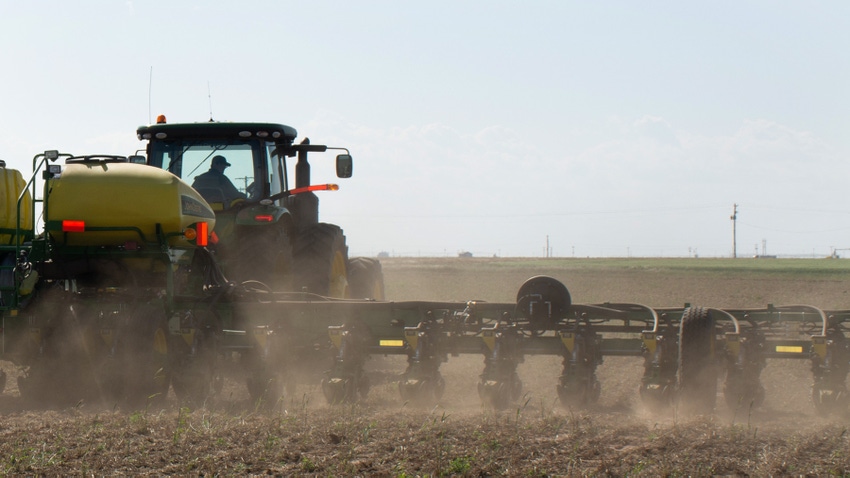
Editor’s note: Nematode infestations are not as obvious as armyworms, thrips, or fleahoppers, but the damage they cause to numerous crops can be devastating. Farm Press called on Extension and Research pathologists From Texas to Georgia to ascertain the damage nematodes can cause, the symptoms to look for in-season, sampling recommendations, and management options. Also, new research seeks to find more varieties resistant to nematode damage.
Farmers who blame less productive areas in their fields on “sorry dirt,” spots where crops do not perform despite adequate fertility and rainfall or irrigation, should sample for nematodes.
“Sorry dirt is a term I commonly hear from farmers as an area where they plant crops, sometimes different crops over several seasons, and they just can't get them to grow,” says University of Georgia Extension Plant Pathologist Bob Kemerait, Tifton.
“It’s that part of a field that has never looked good. They try to fertilize out of it. They try to irrigate out of it. They just can't get it to grow. We're saying growers should absolutely check to see if nematodes could be the source of the problem.”
Discovering symptoms of nematode infection in season is likely too late to apply effective control strategies, pathologists say, but identifying the problem does set the stage for developing plans for future crops.
Texas A&M AgriLife Research Pathologist Terry Wheeler, Lubbock, says in season root-knot nematode symptoms on cotton include “stunting and possibly an increase in seedling disease and fusarium wilt.
Look for galls
“Root-knot nematode causes galls to form in the roots, so looking at roots can help. You should see galling by 40 days or so after planting throughout the rest of the season.”
“Foliar symptoms are often lacking or appear as nutrient deficiencies in cotton,” said Travis Faske, University of Arkansas Division of Agriculture, Lonoke. “Spindle-shaped galls are evident on root systems of stunted plants. Similar symptoms occur on peanuts. The reniform nematode causes some stunting but no galling on cotton. A soil sample will confirm a reniform nematode issue.”
When to check for symptoms
“Root galls are easier to identify after mid-season and closer to harvest,” Faske said. “Digging to examine roots is useful to identify a root-knot nematode issue; however, a nematode issue is best confirmed with a soil sample.”
Faske said identifying reniform infection is not as simple as pulling roots and checking for galls. “You pull up a root system in a suspected reniform field and you really don't see a problem.”
He said some think reniform-infected plants have “dirty roots,” but added that soil type might affect that strategy.
“Reniform can move into fields, even on equipment. We know of cases of reniform movement from one state to another on harvest equipment. That’s also probably how it got here (in Arkansas).
Reniform takes over
“Another dynamic with reniform is that if you put both root-knot and reniform in the same field and give it long enough on the right host, reniform will take over; it's more adaptable to a lot of our soils, especially here in the Mid-South.”
Kemerait recommends growers scout in season for stunted plants, cotton and soybeans that are not thrifty, and foliar “tiger striping” (interveinal chlorosis). Those symptoms could result from fertility issues or from nematodes.
“With tiger striping or interveinal chlorosis, the leaf veins are green but the blade of the leaf between the veins is yellowing. That's a strong indication of fertility deficiency but could also be nematodes.
“Signs of nutrient deficiency on leaves could be signs of root damage. If the roots are damaged, everything you do for the rest of season will be compromised because roots do not perform as they should,” Kemerait said.
“Whether it's seed cost, irrigation costs, insect control, or weed control, everything is compromised because those roots are never going to perform like they should. If the roots are boogered up, they are not taking in nutrients.”
ID the problem
Identifying the problem, either by scouting for symptoms in season or pulling samples late in the season through harvest, will not be enough to prevent losses for that year but will be the basis of future management.
Pre-plant activity makes a difference. Most effective management, Kemerait says, happens before the seed is covered.
“You're never going to get the value out of the crop you should have if you don’t call the right play before you close the furrow.”
About the Author(s)
You May Also Like






